In Life After Residency, national thought leaders in dermatology share their expertise through "Pearls and Perspectives" – practical insights that can assist you during your residency and throughout your career in clinical practice.
Clinician education is a continuous process that is ongoing throughout a physician’s career. Life After Residency is designed to promote the sharing of invaluable knowledge that can, in many instances, only be gained through personal experience. dermMentors is working to encourage and increase the sharing of these insights throughout the dermatologic community, with the goal of helping to improve patient outcomes and experience.
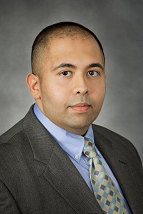 |
|
Arsalan Shabbir, MD, PhD |
There are so many elements to our training, and one of the most important aspects is conducting quality research. My advice to individuals in the early stages of residency is to get involved in research projects, because this work contributes to improving patient care and enhancing our clinical capabilities.
Last year, I received a research grant from the Dermatology Foundation, an organization that is directly supported by dermatologists. I strongly encourage residents to get involved with and support the Dermatology Foundation, as well as SID (The Society for Investigative Dermatology), which is the top society for dermatological research.
Personally, my research interest is in stem cells; specifically, I am trying to understand how stem cells are able to repair tissues. Recently, my colleagues and I published a paper that discusses how stem cells secrete “packets of information” that we call “exosomes,” and we believe these exosomes have the ability to mediate the healing effects of stem cells.
It is absolutely essential for researchers to protect their work, and I strongly encourage all residents involved with research projects to obtain patents so that they retain full ownership of the scientific work they have done. With the ultimate goal of developing a new therapeutic – which could be extremely valuable – patents are the best way to protect what we have been developing.
Obtaining patents is just one facet of conducting viable research, which requires a tremendous amount of work. Oftentimes, residents will have to balance their clinical duties and their research projects, so it is important to find ways to make time for research. In my residency, I did my best to get into the lab as much as possible, and I was fortunate to have the support of my mentor as well as a number of fellows, who were able to help me complete my research projects.
My advice to all dermatology residents is to seek out a strong mentor, as they can be instrumental in providing guidance during training, as well as in the process of deciding on your career path. Personally, my mentor was an invaluable source of information – someone I could discuss my ideas with and gain insightful feedback. My mentor was also a great advisor in terms of my career, as he helped me hone in on my area of focus, and showed me the right steps to achieve my goals. I believe that mentorship is a cyclical process, and the best way for dermatologists to show their gratitude to those who helped them during their training, is to do the same for the next generation.
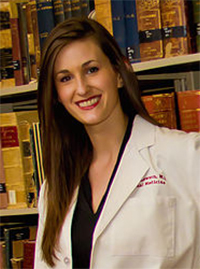 |
|
Kaylan Weese, MD, FAAD |
One of the important decisions that all dermatology residents face is whether they are interested in becoming Chief Resident in their final year of training. As nearly all programs select and appoint the resident they feel is most qualified to serve as Chief, this is typically not a position that residents can apply for. Rather, it is something that interested residents should make known within their program.
In my experience, many residents seem to be intimidated by being Chief, because we are in our final year, and our primary concern is making sure we are fully prepared for our board exams. For many, adding an entirely new set of roles and responsibilities to an already full workload can be almost impossible to imagine. Personally, I found the experience of serving as Chief to be extremely valuable, and also very doable.
I served as a Chief Resident at the Oregon Health and Sciences University, and my experiences in this role have helped me tremendously as I have progressed in my career. The Chief Residency role at OHSU is essentially divided between responsibilities for scheduling, and responsibilities for planning the didactic aspects of residency training. I have a very strong interest in academics; specifically, I have always loved lecture, and this is known among my peers. In training, I gained a reputation for having a proficiency and consistent enthusiasm when it came to classes, note taking, studying, etc., so the leaders of our program felt that I would be a good fit as didactics chief, so I helped with planning our lectures and other educational aspects of the program.
Serving as Chief also helped me to hone my leadership and management skills. When residents finish their training and go into clinical practice – especially if opening their own private practice – the skills we learn as Chief Resident are put to immediate use. Put simply, you will be in charge of other physicians and staff, and be tasked with managing a number of individuals with unique personalities, and the work we do as Chief helps prepare us for these leadership roles.
I strongly encourage any resident with a desire to serve as Chief to make this known, as an inclination toward leadership is a primary factor in choosing the best candidate to lead the other residents in your program.
 |
|
Elizabeth Bahar Houshmand, MD |
As dermatologists, there are a number of avenues that we can pursue. In addition to patient care, we have the ability to conduct research, lecture and teach our colleagues, and mentor medical students and residents. Personally, I enjoy combining these opportunities in order to better treat my patients. This requires striking the right balance.
One of the primary attributes that can dictate a dermatologists’ ideal path is their level of commitment. If you are an individual that would prefer to work a set schedule, there are jobs in our field that you can pursue. However, you will not be able to do all of these other things outside of practice. You have to be willing to make some sacrifices. You have to be willing to give up some of your weekends and evenings to make the time to coordinate it all.
Another quality common among dermatologists who engage in significant work outside their practice is an inherent desire to help the larger dermatology community. Doing clinical trials, serving as faculty, taking speaking engagements – these are all things we do with the ultimate goal of improving patient care worldwide – but they can also make us better physicians.
As a personal example, when I speak overseas, I’m seeing different techniques, different combination therapies, and sometimes I see what treatments are coming down the pipeline. Knowing what else is out there, what clinicians are doing outside the US and the kinds of results they are seeing, has only helped me provide optimal care for my patients. Having a good idea of the global picture and recognizing skin health is critical in my practice.
Most importantly, it is imperative to find the work-life balance that is right for you. While work outside of clinical practice is the right choice for some, it is by no means a requirement for being a great dermatologist. Quite the opposite. It’s up to you to prioritize what is most important to you, and build a life that gives you the best balance.
Personally, I believe that you have to be a happy person to be an excellent doctor. Whether it’s spending time with your family, enjoying your hobbies, travel or exercise, your personal interests contribute to your wellness, and should not be overlooked in any way. My advice to residents is to do what makes you happy – what makes dermatology exciting for you – and you will have an incredibly fulfilling life.
 |
|
Kaylan Weese, MD, FAAD |
Over the past few decades, advances in technology have enhanced our capabilities as dermatologists, and I believe that teledermatology has the potential to do so as well. Personally, I am in private practice in Oregon, and the majority of our state is very rural and very remote, making a lot of areas very difficult to get to. Because of this, a number of patients who would benefit from seeing a dermatologist simply do not have the ability to get to one, and teledermatology can provide a solution for these and many other patients.
The Oregon Health and Sciences University is currently working on a teledermatology platform, and I believe that others in our field are currently working on developing centralized “hubs” for mole mapping. Both of these efforts are instrumental for creating an environment in which the maximum number of patients receive the optimal level of care.
A centralized hub for mole mapping would be tremendously useful, particularly for patients with melanoma or those who have had a number of atypical nevi. For these patients, we would photograph all of their moles and map them. These photos would then be available to all providers through an online database, which would help us to collectively track moles for patients that are high-risk. When we have photos available for comparison, it is much easier to see how these moles have changed over time. Ultimately, I believe it could save our patients from unnecessary biopsies and the resulting disfigurement or scarring. With an online database, there would also be no questions about what has been biopsied, what was atypical, what turned out to be a melanoma, etc., resulting in better patient care. These types of online and digital advances also have the potential to save significant time for doctors, their staff and their patients, and also make offices more efficient.
In today’s environment of increasing healthcare regulations and requirements, many residents can feel intimidated by the prospect of owning and running their own practice. Personally, I never dreamed that I would own my own private practice, but I have found it rewarding and highly enjoyable.
Setting up my own practice in a relatively rural setting has allowed me to be a more complete dermatologist. As you might expect, I do a little of everything. I see children, I see adults, I do surgery, and cosmetics, and I feel that operating my own dermatology office has allowed me to continue to hone all of my clinical skills. I have found that a good proportion of dermatologists leave residency and continue to sub-specialize. By going into private practice, I basically did the opposite.
Amid all of the new regulations – specifically those related to quality reporting, EHRs, etc. – many residents are choosing to work for large hospitals or large dermatology groups because they are overwhelmed by the many steps required to establish a private practice and remain compliant. I think they also believe that ultimately small private practices will cease to exist because of these pressures. In my experience, these burdens are manageable and worth having ultimate control over your practice and lifestyle. Although times are continuing to change, I cannot envision a day when providers are not able to see their patients on their own, in a private practice setting.
My advice to residents who may be interested in starting their own practice is to give it strong consideration – to make the time to think about what you want in life, and what type of work-life balance you can achieve through running your own practice. There are a number of private practice dermatologists who are still heavily involved in academics, and at OHSU I have become sort of a ‘point person’ for residents with questions about starting a practice. I recommend seeking out a mentor who can help guide you through the process, and who will likely show you that it is indeed very doable. Personally, it has been so enjoyable, so rewarding, and most importantly – very manageable. While it’s up to each individual to determine their optimal role in dermatology, I can’t imagine doing anything else.
 |
|
Elizabeth Bahar Houshmand, MD |
One of the critical decisions that every dermatology resident will face is determining what type of work you want to do. My advice to residents, and what helped me considerably, was deciding what type of career I wanted in the early stages of my training. I advise all residents to pursue their goals, no matter how challenging that path may be. It is important to realize that if you want to accomplish something, the first step is making the decision to do so.
Personally, my decision making process started early on. In my career – even while in residency – I worked with great mentors who are now friends in addition to being colleagues. Working with these individuals, I saw, and learned firsthand what goes into building a successful clinical practice. People often see a strong practice and think it just happens organically. In reality, it requires great organization, networking, putting in the extra work on evenings and weekends, and above all else, taking outstanding care of your patients.
You have to find what makes you happy – what makes dermatology exciting for you, and pursue that. You may decide that your goal is to be a medical dermatologist, focusing heavily on patient care. You may want to do cosmetic dermatology or Mohs surgery, or you may want to conduct clinical trials, or pursue a career in academia or industry. These are all decisions. Once you decide what you want to do, you can develop a plan to make it happen. My recommendation to residents is to make the time to determine the ideal path for you. Know your strengths and follow your passions, and with hard work and dedication, you will get where you want to be.
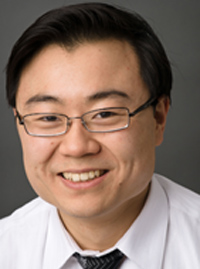 |
|
Steve Xu, MD MSc |
Dermatology residency training can sometimes feel like a highly didactic and “by the book” process. While learning and gaining hands-on experience are key elements to becoming a qualified clinician, alternative environments outside the classroom have the ability to reinforce and enhance key lessons, as well as provide opportunities for career advancement.
Recently, I attended the Caribbean Dermatology Symposium through the dermMentors™ Resident of Distinction Award program, and my experiences with the program and at the conference were very rewarding. First, the conference was extremely well organized and highly educational, and the speakers were top-notch. Most importantly, I had the invaluable opportunity to connect with a mentor, present my work, and meet and interact with other talented dermatology residents from around the country. On a personal note, it was wonderful to be in the Cayman Islands for a week in January…instead of where I am based, in Chicago.
Mentorship is at the core of the Resident of Distinction program, and I had the unique opportunity to meet and work with Charles Ellis, MD, an internationally recognized Professor of Dermatology at the University of Michigan. Connecting with Dr. Ellis was a great experience, and I plan to stay in touch with him, as well as the other Resident of Distinction Award recipients. It is so important to step out of the formal dermatology training hierarchy to take time for one-on-one mentorship, and the mentorship aspects of the program allowed me to connect with leaders in the field on a different plane. Put simply, a lot of the lessons imparted in a more relaxed, social setting cannot be found in a textbook, and the advice I received will help guide me throughout my training and my career.
Mentorship is critical to career development. However, both mentors and residents don't always have a roadmap. In a small field such as dermatology, opportunities to connect such as those made possible through the Resident of Distinction program are absolutely essential. The great connections I made with mentors and fellow residents alike will undoubtedly lead to strong, lasting relationships, new ideas, and future collaboration.
Dermatology is a field that has traditionally rewarded curiosity and proactivity. In my experience, the dermMentors™ Resident of Distinction Award provided the chance to be recognized for resident research, and it is a truly wonderful feeling to be encouraged to continue my ongoing research. I highly recommend that other residents in dermatology pursue this or other opportunities to enrich their education outside of the classroom setting.
 |
|
Vic Narurkar, MD |
There are three primary benefits for residents attending any of our Cosmetic Boot Camp programs. First, they gain invaluable exposure to leaders in the field of cosmetic procedures. The chance to meet, interact and network with respected thought leaders can open doors and create opportunities to discuss key issues and the latest clinical research, and collaborate on key initiatives.
Second, residents enhance their knowledge, not only on the latest trends and technologies, but in what we call “evidence-based cosmetic dermatology.” Specifically, we always dedicate a significant portion of our educational program to anatomical study. For example, in 2016 we are going to be launching simultaneous cadaver dissection courses, so all attendees can actually see the differences in the areas of the facial anatomy where we inject fillers and toxins. In keeping with our central philosophy, we always strive to present all information in a very fair and balanced manner, and hold all topics to the highest level of academic rigor.
Most importantly, those attending our programs get to see live treatments. We hold patient demonstrations that simulate actual doctor-patient interactions, bringing to light the potential issues that can arise and how best to approach these scenarios. We typically have an injecting physician and a moderator, and provide residents with hands-on experience with designated faculty. We re-enact consultations as well as live treatments, recognizing that both appropriate patient communication and best practices in patient care are crucial to achieving the best possible outcomes.
In addition to our clinical focus, we also hold a three-day Practice Management Session in Las Vegas every other year. All CORE specialty staff are welcome to attend these meetings, which are specifically dedicated to optimizing practice management.
Practice management education and training is important, because over the years we have seen many individuals who are outstanding physicians, but who lack the practical and logistical know-how to run their practice effectively and efficiently. To address this audience, and continue our work toward ensuring best practices in patient care, we dedicate sessions during the Cosmetic Boot Camp and CBC University meetings to practice management. These sessions, along with the three-day Practice Management meeting help physicians tackle vital questions such as:
These and other key topics are discussed, and we often include PAs, NPs and nurses as faculty during these sessions to provide a more complete perspective for all in attendance.
As clinicians, it is critically important – and almost a responsibility – to continuously educate ourselves throughout our careers. Ongoing education is particularly important in the fast-paced world of dermatology. As new technologies, treatments and techniques are introduced, dermatologists can enhance their capabilities and expand their knowledge base by attending Continuing Medical Education (CME) meetings and conferences. It is amazing how much things have changed, even in just the past five years, with the rise of fillers, toxins, and laser skin care. CME meetings provide the opportunity for dermatologists to stay aware of current trends, and to perfect the techniques to help them achieve the best possible outcomes for their patients.
Personally, I find that I always learn something from every CME meeting I attend. Whether it’s new “tricks of the trade,” practice management guidelines, or new data about complications and how to manage them, the more knowledge and experience we can obtain, the better care we can provide for our patients.
This is a philosophy that most in our field share, and 12 years ago, Drs. Mary Lupo, Kenneth Beer and myself recognized an unmet need in education for practicing dermatologists in what we call the CORE aesthetic specialties. To help fill this gap, we designed and launched the first Cosmetic Boot Camp, with the mission of educating only CORE specialty physicians, which are Dermatologists, Plastic Surgeons, Ophthalmologists and Otolaryngologists.
Our focus on the CORE specialties allows us to educate at the highest level. At meetings attended by generalists and physicians in other fields, information tends to be diluted, so we created the Cosmetic Boot Camp to delve deeper – to speak to an audience of our peers, who understand the science and are enriched by and appreciative of the specificity of our approach.
Five years ago, we recognized how difficult it is for Residents and Fellows to leave their training programs to attend our meeting. With the goal of offering the same level of education to Residents and Fellows, we launched Cosmetic Boot Camp University, which are held on Saturdays, in cities with the highest concentration of residency programs to maximize attendance for those still in training. We also provide web-based training, in which we cover the same material as our main meeting, to engage and educate those unable to attend in person. In all of our Cosmetic Boot Camp programs our practical, hands-on approach to real-world issues furthers our ultimate goal of helping clinicians provide the best possible care for their patients.
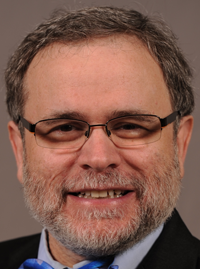 |
|
Daniel Siegel, MD, FAAD |
Start Your Job Search Early
The recommendation I give most often to residents in their third year is to start thinking about what they want to be doing in a year, and do so as early as possible. Whether they are trying to find an appropriate fellowship or a good fit in a private practice, my advice to third-year residents is to start looking as soon as possible. As in any professional field, the sooner a resident starts their search, the sooner they may find somewhere they want to be or someone they want to work with. Also, starting the job search early allows that much more time for contract negotiation. I have seen scenarios in which some residents have waited until March, April or even May to negotiate a contract, only to find that the opportunity has fallen though. This leaves the resident nearing the end of the academic year without their next step lined up, and this is a situation that all residents want to avoid.
Set Realistic Expectations
The typical dermatology resident has gone through their training, and in fact, gone through life, achieving success at every step. I advise third-year residents to have realistic expectations, as they are about to enter the real world of dermatology, in which many possess superior knowledge and experience. Third-year residents should be mindful that they are still in the nascent stages of their career, and strive to continue their growth as clinicians by constantly learning from others.
Additionally, residents often enter the job market with salary expectations that may be unrealistic. Based on what they have heard from friends, relatives and others in medicine, many residents anticipate that they will earn a big salary in their first year post-residency. In many cases, residents may be given the opportunity of a wonderful job offer, but may not accept it because they feel the position is not paying them what they feel they are worth. Residents should be realistic about what their time and effort is worth, and remember that much of what they do might also be done by a well-trained extender. Residents should take care in not making themselves ‘too difficult to date’ so that the hiring individual does not opt to find someone less expensive and less high maintenance.
Recently, I heard a figure that 2 years after graduation, 2 out of 3 dermatologists are not in the same practice they joined following their training. This is not surprising. Again, I advise residents to manage their expectations; the person that hired them has invested a great deal, and expects a certain level of productivity. If a resident is not adding value to the practice at the level they envisioned, they may be forced to look in another direction. Recent graduates will face challenges and realities that are different from what they imagined; being as prepared as possible and entering every situation with an open mind will serve them well immediately following their training and throughout their career.
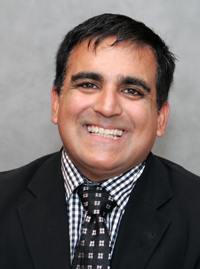 |
|
Neal Bhatia, MD |
Involvement with dermatology societies can start with the American Academy of Dermatology (AAD), which provides a base for residents to learn about other societies. Attending the Academy’s meetings affords residents a preview of specialty societies, such as the American Acne & Rosacea Society (AARS) or Women's Dermatologic Society (WDS). At such forums residents can cultivate an academic interest, increase their visibility, and become involved in areas of leadership. Members of such organizations make a concerted effort to recruit residents with leadership potential and an interest in advocacy for the society.
Societies focused on a specific condition or disease state, such as the National Psoriasis Foundation, can support a practice in several ways including providing patient education materials ─ pamphlets or posters, etc. ─ and sponsoring patient screening or teaching opportunities for the clinician. They provide an avenue for clinicians to become involved in advocacy for patients. Some societies offer workshops on practice management and “health checks” for existing practices, and also provide advice on setting up a practice. Being an active member in a research-based society can also be of benefit in the context of conducting a clinical trial.
Residents should make an effort to attend state or local dermatology society meetings. Attendance at such meetings offers an opportunity to learn about the political landscape for dermatology and about advocacy issues as well other concerns surrounding insurance and networks. These are universal issues that are relevant regardless of geographic setting. As residents may be “sheltered” from some of these realities while in training, it is a good idea to have an understanding of them – to be “ahead of the game” before finishing training. Such exposure at the state and local level also provides an opportunity to decide if residents want to be involved in governance. It is not unlike auditioning for a sports team. You do not go straight to the major leagues. A resident can learn leadership skills in a state society, can learn to carry an office, and can be appointed as a member of an advisory council to the Academy.
There are many different avenues for becoming involved in governance at the state and local level and making a difference with your voice. Activities such as the Legislative Conference, which occurs every September, has a leadership forum. Invitation to the forum represents recognition by your trainers or peers of interest and desire for involvement in governance, and can lead to numerous exciting opportunities in the future.
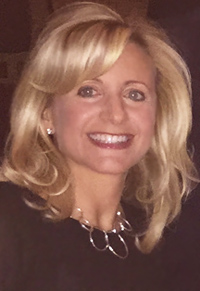 |
|
Kim Chesky, |
It is important for residents to understand that the top journals receive hundreds of submissions each year, and that a relatively low percentage of the pieces they review ever get published. There are some “musts” that new authors can address to increase the chances of their work getting published.
Consider having a medical writer review your manuscript before submission.
Some other recommendations that may help new authors:
When submitting an article for publication, authors should ask themselves, “Am I enhancing the readers’ knowledge with new information,” and “does my article offer a point of view that readers may not have considered before?” Peer reviewers are looking for manuscripts that are original, important, interesting, and valid. Keeping these questions top-of-mind will further increase the chances of an article going to print.
For many physicians, getting published has become an important step in their career. Doctors publish original research, case reports, reviews, and many other types of articles with the primary goal of advancing the science of medical treatment and contributing to improved patient outcomes. Physicians also publish their work as part of their academic track, and to establish or enhance their standing in their specialty's global community. Breaking through as an author can be a complex process and there are some things that residents should know before they begin.
The first thing residents should do is identify the journal in which they would like to be published. Some journals even have special sections dedicated to residents. For example, The Journal of Clinical and Aesthetic Dermatology has a section called “Resident's Forum,” in which dermatology residents are encouraged to submit their original research, reviews, and case reports. Residents can increase the likelihood of their paper being accepted by submitting to a journal that has a section for residents only.
When choosing a journal, I strongly advise submitting to those that are both peer reviewed and indexed on multiple databases, such as PubMed, CINAHL, Embase and Scopus. Selecting a journal that meets these two requirements will enhance the article's credibility and exposure. By publishing articles that are indexed and searchable, other researchers and authors will be able to cite the work in subsequent papers.
The other big decision aspiring authors' face is selecting a topic that is timely and pertinent to their target publication. There are numerous ways to find out what topics are most interesting to a given journal; some journals publish their editorial calendar, which provides a good idea of the subjects they feature. Residents can also read through past issues of the journal to see what topics they publish most frequently, and I also advise reading the syllabi of the upcoming major dermatology meetings to see what the hot topics are as well as the new sessions.
Residents may also consider contacting journals directly to find out what subjects they are most interested in. By doing this, new authors can develop relationships with the journals, which can prove helpful during the review process.
Finding a mentor who has been published in several journals can also prove invaluable. A mentor who is an experienced author can help guide residents through the process of getting published, and may also be willing to serve as a co-author.
When submitting an article for publication, authors should ask themselves, “Am I enhancing the readers' knowledge with new information,” and “does my article offer a point of view that readers may not have considered before?” Peer reviewers are looking for manuscripts that are original, important, interesting, and valid. Keeping these questions top-of-mind will further increase the chances of an article going to print.
 |
|
Elizabeth Bahar Houshmand, MD |
My top recommendation for residents searching for a job is to know their worth and to not be afraid to negotiate. When finishing residency, most will not know what salary they should expect. There are online databases that provide state-by-state salary averages by specialty, which can help prepare residents for interviews and salary negotiations. When determining an expected salary range, it is important for residents to consider two primary factors:
— How many days a week do you want to work? Are you a 5-day/full-time person, or is a 3-day work week more desirable?
— How many patients will you be expected to see each day, and what percentage of your patients will be surgical?
It is critically important for residents to know their prospective employer's expectations, as well as their own, and then make sure these are clearly spelled out in their contract.
While I do not advise residents to have a lawyer when first interviewing at a given practice, I strongly recommend that they work with a medical contract lawyer during the final contract negotiation stage. Having a lawyer review all contracts will ensure that mechanisms are in place to protect residents from the various scenarios that can arise. For example, if a practice is sold or if there is a change in leadership, are there measures in place to protect you? This is the type of detail residents may not be aware of when headed into negotiations, and a good employment lawyer will make sure that these protections are in place.
The best piece of advice I can give residents during their job search is that they will not know what a practice is like until they go there and experience it for themselves. I strongly recommend spending a day or two shadowing people in a practice to see if it's a good fit in terms of logistics, personalities, work culture and clinical expectations.
My advice to graduating residents looking for their first job post-residency is to make sure to consider a few key factors. The first is location. Residents should ask themselves: Where do they want to end up living? Do they feel a need to be close to family? Do they need to live in a place that suits their lifestyle?
Also, different areas of the country have different rates of incidence of the various skin conditions we treat. If a resident is interested in doing a significant amount of surgery, they may look at states with high skin cancer rates, such as California, Texas and Florida. Likewise, if a resident is more interested in aesthetics or cosmetic procedures, they may explore opportunities in regions or cities that see a higher percentage of these types of patients.
Secondly, residents should take time to determine the type of work setting that is most appealing to them. When doing their training, residents are all in a university-based work environment. Toward the end of their program, it is important for residents to give some thought to their ideal work setting and pursue job opportunities in these types of environments. Young dermatology residents have numerous options, including working for a hospital group, working in a private multi-specialty physician group, working with a group of dermatologists, working with a plastic surgeon, or opening their own practice. Understanding where they will thrive is a key component to a focused and efficient job search.
The third area for residents to consider is the types of patients they would like to see. The beautiful thing about dermatology is that we see patients of all ages, from infants to geriatrics. We treat common conditions, we perform surgeries, and we do advanced cosmetic procedures. Residents who know the types of patients they are most interested in treating will often have a more focused job search, and may also be more appealing to potential employers, as their passion will be evident throughout the interview process.
Personally, I'm originally from the East Coast. I did my training in the Midwest, then worked in California, and now I'm in Texas, so I've had the opportunity to practice and interview all over the country. In my experience, the types of questions employers ask will not vary all that much from state to state. What dermatology practices are all looking for is someone who is very enthusiastic about what they do, is hard working and flexible, and is fully dedicated to helping build and grow the practice. The desire and ability to build and grow a practice is the primary difference between the university setting and real-world practices, and a key element for young residents to consider. In the university setting, dermatologists' patients are booked out for them, but in private practice, dermatologists are expected to acquire new patients, gain those patients' trust and maintain them for the long-term. Residents who have considered all of these factors will execute a focused job search that can start them on their path to an exciting and rewarding career.
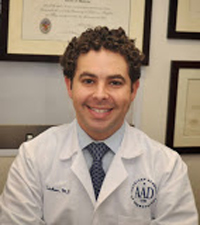 |
|
Joshua Zeichner, MD |
In recent years, increased regulatory, reporting and compliance measures have started to erase the stigma attached to relationships between dermatologists and pharmaceutical companies. All financial compensation paid to doctors by companies is now considered public information, so clinicians who report their activities in a timely and accurate manner should not encounter any compliance issues. I advise young dermatologists to be up-front and open if their patients ask them about their relationships with any companies, and to communicate that these relationships in no way influence their treatment.
If a practicing physician also works as a consultant, advisor or investigator for a pharmaceutical company, this does not mean that they are influenced in any way to write one drug over another. In fact, if a doctor works as an advisor to a drug manufacturer, that most often means that they have established themselves as a known and respected thought leader in their field. The key takeaway message for residents is that consultants are not “paid drug dispensers” who essentially work for their partners in pharma.
Maintaining Objectivity
It is important for physician advisors to maintain their objectivity, and to not align themselves with one particular company or drug. Patients seek care from clinicians who are knowledgeable and objective. Likewise, drug companies want to work with clinicians who are knowledgeable and objective, and who provide consistently honest information and feedback.
Understand the Relationship
Physicians should understand that industry is not the enemy. Industry supports many of the meetings that dermatologists attend, including the American Academy of Dermatology conference and many other regional and local meetings. They provide funding and grant opportunities for research and educational events and initiatives, and are often the origin of advancements in patient care. Exploring the opportunity to build relationships with pharmaceutical companies can be a very rewarding part of what we do as dermatologists.
One of the ways young dermatologists can grow as clinicians and enhance their professional profile is by collaborating with companies that manufacture pharmaceuticals, devices and other dermatology-related products. These partnerships can present exciting opportunities for dermatology residents. They can lead to collaboration on clinical trials, and to securing funding for studies that would otherwise not be possible. Many drug manufacturers present grant opportunities, and frequently accept applications for investigator-initiated studies (studies that dermatologists choose themselves and submit to a given company for funding). The ability to participate in – or lead – investigator-initiated studies is a valuable experience that can be achieved through building relationships with industry. In these studies, clinicians focus on specific areas that are of most interest to them, and that may have a larger impact across dermatology.
Breaking Through
Working with a pharmaceutical company as an advisor, consultant or clinical investigator begins with building relationships. In addition to Sales and Marketing divisions, drug companies also have a Medical Science division, responsible for education and research. I advise residents that these are the “go-to” representatives at each company for drug-related questions, and to connect with them whenever possible. These are the individuals who can help facilitate clinical trials.
Getting Involved
When making contact with Medical Science Liaison(s) at a given company, I advise residents to express interest in current and future clinical research and a desire to understand the latest innovations and developments at their company. Ask about the studies they are performing. Ask about the latest safety and efficacy data. Ask about combination studies or what future trials they are planning. Showing genuine interest and a passion for what’s new at a company is a great way for residents to get their name on that company’s radar, and may lead to invitations to participate in their Advisory Board meetings.
Connect at Conferences and Congresses
One of the reasons drug companies attend regional and national conferences and congresses is to meet and interact with dermatologists. I advise residents to attend these meetings and to try and identify the key liaison(s) in their region. If they are not present, try to get their information and contact them directly. My best recommendation to residents who would like to work with industry is to try and partner up with a senior dermatologist mentor who has common interests. Oftentimes, a mentor can facilitate introductions with their pharmaceutical company contacts, which can lead to exciting research opportunities.
 |
|
Daniel Siegel, MD, FAAD |
Many first-year residents are unsure of what, if any, sub-specialization they want to pursue within the specialty of dermatology. Residents in their first year should instead pay attention to and be open to any and all opportunities to obtain additional knowledge and experience beyond the confines of their residency program. I advise residents to jump on every opportunity to enhance their knowledge base. Do everything. See everything. Do as much as you can, and read as much as you can. There is a tendency for many first-year residents to spend much of their spare time studying for their in-service and later, board examination. In my experience, most pass the exam, and it's more important to learn to think, to learn to take care of patients and to learn to critically assess the literature. This is often best done assisting their colleagues with writing papers or getting out into the field in their spare time, instead of reviewing multiple choice questions.
First-year residents may not have an opportunity to visit and spend time with dermatologists in the private sector as part of their training. If a resident's training program does not allocate time for practice visits, I recommend that they take some of their own time to gain the first-hand knowledge and experience that can only be found in clinical practice. Talk to seasoned clinicians, spend a day or two in their offices, see what their days are like in various types of practices. These experiences can be of tremendous value, and can help residents determine what specific area is of most interest to them.
Get Involved with AAD
I encourage first-year residents to get involved with the American Academy of Dermatology. By visiting the AAD website, residents can search through open positions on committees and task forces, and May-June is definitely the best time of year for residents to apply. There are a number of openings for residents, and working with the AAD on various initiatives is a great way for residents to find something within the field of dermatology that they are passionate about.
If a resident is unsure about what type of role within the AAD they want to pursue, I advise that they find something that interests them, and look at what the commitment is. Some commitments are very minor – annual meetings and a few calls during the year – others may require as much as 10-20 hours each week. It is essential that residents find something they feel they can accomplish, because if a resident accepts a position but does not fulfill their responsibilities, they will likely find it difficult to get further appointments where action is expected. Volunteerism is doing service, not collecting merit badges. Building relationships is an integral part of dermatology training, and the AAD is a great place to start.
The VA hospital system can be an enjoyable and rewarding place to work. We see a lot of interesting patients and interesting diseases – it’s really a broad spectrum – from chronic, common and sometimes, banal disease to more exotic things. Patients at the VA are a diverse mix of some active duty, some recently discharged from the military, and older patients with the usual conditions found in older populations. We do treat a number of women, with more women in the armed forces in the past few decades. We encounter a wide range of everything, including numerous skin types, which make the VA hospital an interesting, pleasant place to work. The only patients we really don’t treat are children.
Research and Growth Opportunities
The VA has a mission of: teaching, research, and patient care. Providing great care for our veterans is most important, but it’s a three-legged stool, and all three legs must be able to stand and function. There are opportunities to do important research at the VA – both clinical and basic science – with an emphasis on education. In some VAs, dermatologists have created specialty clinics, such as psoriasis clinics, or at the Brooklyn VA, for example. We have a Mohs facility. Some VAs have more in the way of non-invasive imaging facilities or laser technology, allowing young dermatologists to grow professionally along with scientific advancements.
Practical Advantages
For those preparing for life after residency, some may want an 8 to 4:30 workday, and the VA has that. It’s a pretty defined workday; VA doctors won’t typically have the on-call and other responsibilities of some other types of positions, but that can vary from VA to VA.
Also, working at a VA offers stability. Sometimes an individual will be working as an employee and won’t have advance notice that their practice is cutting back or even closing. Anything can happen in any job, but it’s less likely in a VA, as it’s a government system that is expanding all the time. Recently, the VA has been dealing with some adverse publicity concerning backlogs and delays, so they are definitely hiring. I get emails on an almost weekly basis from a VA looking to hire a dermatologist.
The VA also offers great benefits. They have a strong retirement program, pension and supplemental retirement plans, and good health and life insurance. In our specialty, a number of dermatologists have built significant careers working within the VA hospital system.
 |
|
Neal Bhatia, MD
|
One of the first questions that arises for dermatology residents during their training concerns the value of strategic alignment with dermatology societies. My advice for residents is to become involved early in order to understand the importance of advocacy, and the role of different societies in terms of education, patient care, governance, and political action.
Many dermatologists to this date still do not fully understand the roles and objectives of the AAD, the AAD/A, SkinPAC, ASDS, and many of the specialty societies. Organized dermatology societies offer a venue to expand education – outside of formal teaching settings – in the form of workshops and research opportunities that allow new residents to cultivate their own niche. Just as importantly, organized dermatology provides an environment in which residents can develop leadership and advocacy skills. The benefit of membership early on may be purely educational; however, new residents that liaise with various societies through the American Academy of Dermatology (AAD), typically the first organization that residents are introduced to, can frame areas of interest and have an avenue to assume leadership roles if so desired. We all have a responsibility to shape the future of our specialty as advocates, in governance, or in teaching our peers. It is a privilege to be in dermatology, and it is very important to give something back.
Strategies for Aligning Yourself with Dermatology Societies
The first year of residency training is typically very hectic, as the focus is on learning the “fundamentals.” However, by the second year most residents begin to attend meetings, which offer various opportunities such as giving presentations at the Gross and Microscopic Dermatology Symposium or attending workshops on topics outside their training. Residents may also consider pursuing research at their own institution, coordinated through efforts from societies such as the American Society for Dermatologic Surgery (ASDS) or the Society for Pediatric Dermatology (SPD). Other opportunities for professional growth arise toward the second year and third year, as residents can choose to cultivate a leadership role as a resident member of a committee, or submit a resident column for publication. Importantly, the AAD provides many opportunities for involvement at the leadership level, including membership on different committees or task forces as well as being nominated as a resident observer of the Board of Directors.
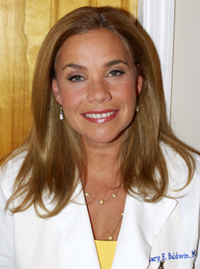 |
|
Hilary Baldwin, MD |
Dermatology is a relatively narrow field and many dermatologists believe it is possible to practice both medical and cosmetic dermatology well. However, over time some dermatologists develop an affinity or interest in a particular area that translates into expertise in that field. The process of specializing in a particular area can vary, however. For me, it was an “organic process,” which coincided with my interests. Alternatively, some dermatologists expressly set out to specialize in a particular area. Cosmetic dermatology is certainly one of the growing specialties, in part, due to financial incentives, but primarily because of the evolution in products and treatment modalities. There has been very gratifying progress in laser techniques and filler products, for example. The changing patient population is also transforming the landscape of both medical and cosmetic dermatology. Demographic changes are translating into a greater focus on conditions in patients of color such as keloid and some hair disorders. Clearly, patients of color, older patients, and non-medical techniques in acne represent growing areas with an expanding patient base. However, pursuing an area of genuine interest should be the primary guide in choosing to specialize. Deve